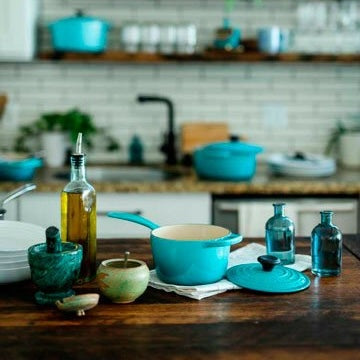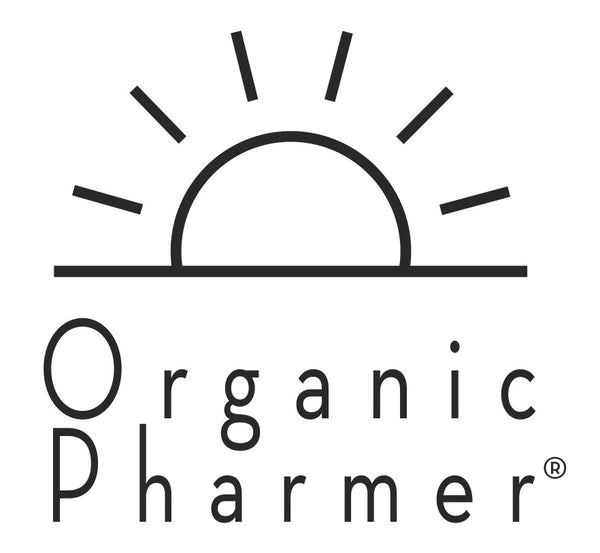
Non-Toxic Cookware Guide: Safe Materials, Top Picks & Tips
Share
Cooking at home is not only healthier than dining out but also empowers you to take full control of your nutrition. By preparing your own meals, you can select high-quality ingredients, limit additives, and customize recipes to align with your personal tastes and wellness goals. A key ally in home cooking is nonstick cookware, celebrated for its ease of use—streamlining the cooking process and making cleanup effortless. However, the safety of traditional nonstick pans has been a topic of heated discussion since their introduction, raising important questions about their impact on health and the environment.

Here’s Why:
The concern stems from the materials and coatings used in conventional nonstick cookware, particularly substances like PFAS (per- and polyfluoroalkyl substances), commonly referred to as "forever chemicals." These chemicals are prized for their nonstick properties but have raised red flags due to potential health risks, including links to hormone disruption, developmental issues, cancer and environmental contamination. Over time, as non-stick pans age or are overheated, they can release toxic fumes and particles that may compromise both human health and the environment. PFAS and heavy metals can also leach into food, particularly when cooking at high temperatures with acid (tomatoes, citrus, vinegar).
In response to these concerns, the cookware market has evolved, introducing “safer” alternatives like ceramic-coated pans. While some brands genuinely prioritize health and sustainability, not all cookware labeled as “green” or “nontoxic” is entirely safe. Even when the ceramic coating itself is non-toxic, the underlying materials—such as lead, aluminum, or cadmium—can pose risks. Over time, wear and tear can cause the ceramic coating to chip or degrade, potentially exposing these harmful base materials. Aluminum exposure has been linked to neurotoxicity, obesity, and even breast cancer; while lead, another known neurotoxin, is linked to kidney and heart disease.
Since I believe that cooking should be a source of nourishment and joy—not a cause for worry, I’ve created a list of things for you to look for when purchasing cookware for your own home. I’ve also added a list of products and brands I trust and I use daily.
Skip the Research - We've Done It For You
Wondering which kitchen essentials are actually safe? Our wooden cutting boards and utensils collection features only toxin-free options that meet the highest purity standards.
Non-Toxic Cookware: What to Look For and Why I Like It
Solid Ceramic Cookware
-
Made entirely from clay, these pots and pans are free of heavy metals and synthetic coatings.
-
Naturally nonstick, durable, and safe for high-heat cooking.
Cast Iron
-
Free of synthetic chemicals and highly durable.
-
Offers the added benefit of iron supplementation to your diet.
-
When properly seasoned, it creates a naturally nonstick surface.
Enameled Cast Iron
-
Combines the benefits of cast iron with a non-reactive, chip-resistant enamel coating.
-
Beautiful, durable, and free from PFAS, PFOA, PTFE, lead, cadmium, aluminum, and BPA.
Stainless Steel
-
Food-grade stainless steel (18/8 or 18/10) is durable, versatile, and resistant to leaching.
-
Ideal for cooking acidic foods without concern for chemical leaching and contamination.
Recommended Products
-
Made from solid ceramic and third-party tested to be lead- and cadmium-free, meeting California Proposition 65 safety standards.
-
Xtrema Cookware
-
Pre-seasoned for convenience, naturally nonstick with care, and built to last for generations.
-
Lodge Cast Iron

All-Clad Stainless Steel Cookware
-
Premium, food-safe stainless steel with excellent durability and heat distribution.
-
All-Clad Cookware
-
Made in France, free from PFAS, PFOA, PTFE, lead, cadmium, and BPA.
-
Made In Enameled Cast Iron
Made In Stainless Steel Cookware
-
Manufactured in Italy and third-party tested to meet European Food Contact Safety Regulations (Report #158240287a 001).
-
This is the cookware I personally use.
-
Made In Stainless Steel
Your Kitchen Deserves Better
Now that you know what to avoid, it's time to upgrade. Explore our carefully curated selection of wooden cutting boards, utensils, and kitchen essentials - all chosen for their purity and safety.
Because your family's health starts in the kitchen.
Final Thoughts
Swapping out toxic cookware doesn’t have to be an overnight change—small steps can lead to big improvements. Start with a single piece of high-quality, non-toxic cookware and build your collection over time.
About the Author

Lisa Malin, Founder of Grounded, is a Certified Holistic Health Coach dedicated to a personalized, whole-person approach to wellness. With a focus on active goal-setting and balanced living, she empowers clients to bridge the gap between where they are and where they want to be.
Citations
-
Sunderland, E. M., et al. “Environmental Health Impacts of PFAS: What We Know and What We Can Do.” Environmental Science & Technology.
-
Krewski, D., et al. "Aluminum in the Human Body." Critical Reviews in Toxicology.
-
Tadele, A., et al. "Toxicity of Heavy Metals in Everyday Products." Environmental Science and Pollution Research.

1 comment
Thank you for doing the research to help make our decision making quicker and easier.